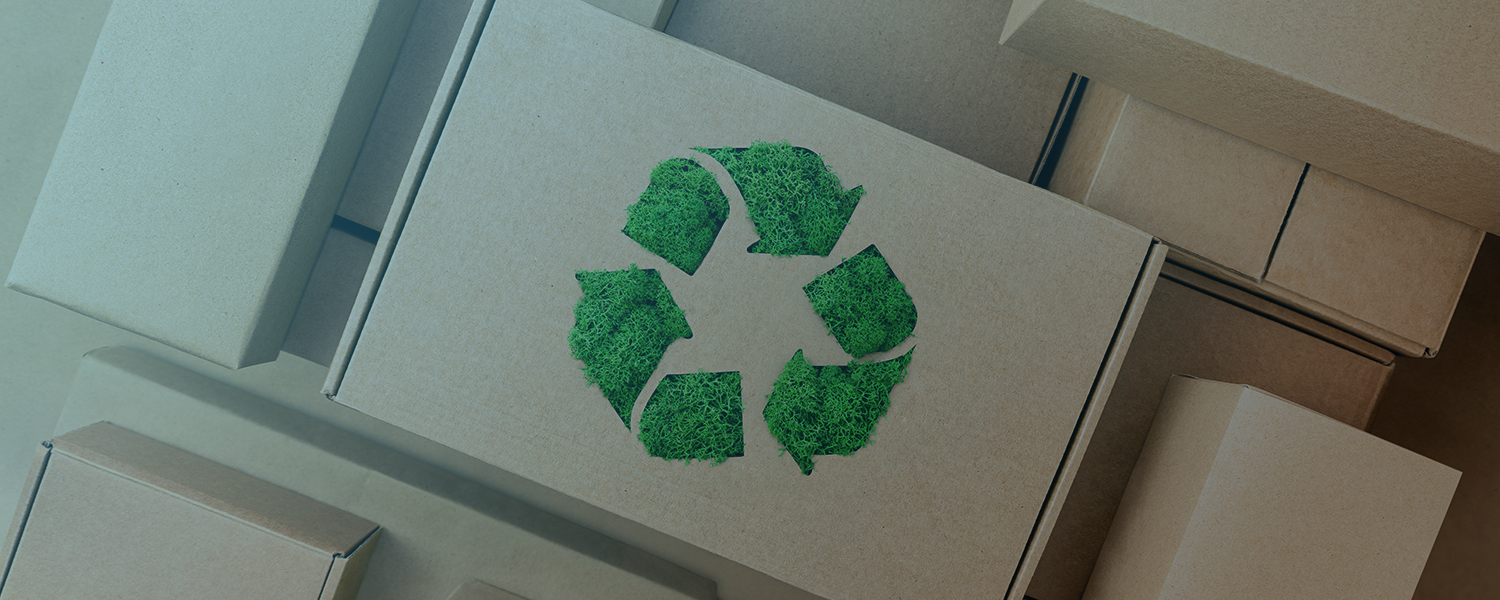The sustainable packaging solutions for e-commerce industry is experiencing unprecedented growth, shipping billions of packages annually. However, this expansion comes with a significant environmental cost: packaging waste. With over 165 billion packages shipped in the US alone each year, implementing sustainable packaging solutions for e-commerce has never been more critical.
Today’s consumers are increasingly eco-conscious, with 73% of shoppers willing to pay more for products with sustainable packaging. By adopting greener packaging practices, you can reduce your ecological footprint while simultaneously strengthening your brand and meeting consumer expectations.
Table of Contents
4 Key Benefits of Eco-Friendly Packaging
Implementing sustainable packaging solutions for e-commerce delivers multiple advantages that extend beyond environmental protection:
- Significant reduction of ecological footprint: By utilizing recyclable, biodegradable, and compostable materials, you actively contribute to waste reduction and resource conservation. Look for certifications like the FSC label to ensure materials come from responsibly managed forests.
- Long-term cost efficiency: While the initial investment may be higher, sustainable packaging typically reduces overall expenses through lighter materials (reducing shipping costs), less material usage, and potential tax incentives. Many businesses report 15-30% packaging cost reductions after optimizing their sustainable packaging strategy.
- Enhanced brand reputation and loyalty: Brands demonstrating environmental responsibility enjoy increased customer loyalty and positive perception. According to recent studies, 78% of consumers feel more positive about companies using sustainable packaging. Organizations like the Ellen MacArthur Foundation provide resources to help companies promote circular economy principles in their packaging.
- Regulatory compliance: As packaging regulations become increasingly stringent globally, adopting sustainable packaging solutions for e-commerce helps your business stay ahead of compliance requirements and avoid potential penalties. The EU Packaging Directive and similar regulations worldwide are setting increasingly strict sustainability standards.
7 Types of Sustainable Packaging Materials
When implementing sustainable packaging solutions for e-commerce, choosing the right materials is crucial. Here are seven environmentally-friendly options to consider:
1. Recycled Materials
Packaging made from recycled paper, cardboard, or plastic significantly reduces virgin resource consumption and lowers production energy requirements by up to 70%. Major retailers have reported that switching to 100% recycled cardboard reduced their packaging carbon footprint by up to 35%. Rajapack offers innovative solutions using recycled materials specifically designed for e-commerce operations.
2. Compostable Packaging
Truly compostable materials break down completely in industrial facilities within 180 days, leaving no toxic residues. Materials such as PLA (polylactic acid) derived from corn starch and mushroom-based packaging offer excellent protection while decomposing naturally after use. The Cradle to Cradle certification helps identify genuinely compostable and environmentally benign materials.
3. Biodegradable Plastics
Unlike conventional plastics that persist for centuries, biodegradable alternatives decompose through natural processes within 3-6 months under proper conditions. These materials are particularly suitable for protective films, void fill, and secondary packaging components that typically have short usage lifespans.
4. Reusable Packaging Systems
Durable, multi-use packaging represents one of the most sustainable options available. Companies implementing reusable packaging systems report up to 80% reduction in packaging waste. RePack offers an innovative returnable packaging solution specifically designed for e-commerce businesses, allowing packages to be reused up to 40 times before recycling.
5. Paper-Based Alternatives
Innovative paper-based solutions are replacing traditional plastic packaging in surprising ways. From molded pulp inserts to honeycomb paper wrap, these alternatives offer excellent protection while being readily recyclable through existing waste streams. Paper packaging from sustainable forestry reduces greenhouse gas emissions by up to 60% compared to virgin plastic alternatives.
6. Plant-Based Materials
Packaging derived from agricultural byproducts such as sugarcane bagasse, wheat straw, and bamboo provides renewable alternatives to traditional materials. These plant-based options often require 65% less energy to produce than petroleum-based counterparts and naturally decompose at end-of-life.
7. Minimal Packaging Designs
Sometimes the most sustainable packaging is simply less packaging. Minimalist designs that eliminate unnecessary components while maintaining product protection can reduce material usage by up to 40%. Companies adopting minimal packaging approaches report significant material cost savings while enhancing the unboxing experience through thoughtful, efficient design.
5 Best Practices for Implementing Sustainable Packaging
Successfully implementing sustainable packaging solutions for e-commerce requires more than just material selection. Follow these best practices:
1. Optimize Packaging Dimensions
Right-sized packaging eliminates wasted space and materials. Businesses that implemented packaging size optimization report up to 40% reduction in material usage and significantly lower shipping costs due to dimensional weight pricing models used by carriers. Consider investing in custom-sized packaging or adjustable designs that adapt to different products.
2. Minimize Void Fill Usage
Traditional packaging often contains excessive protective fill materials. By redesigning packaging to fit products more precisely or using innovative protective designs like corrugated inserts, you can reduce or eliminate void fill while maintaining product protection. When fill is necessary, choose biodegradable options like recycled paper or cornstarch-based peanuts.
3. Implement Transparent Sustainability Communication
Clear messaging about your sustainable packaging initiatives educates customers and builds brand trust. Include recycling instructions, sustainability certifications, and the environmental benefits of your packaging choices directly on packages or inserts. According to research, 70% of consumers are more likely to reuse or properly recycle packaging when clear instructions are provided.
4. Partner with Environmentally Responsible Suppliers
Build relationships with suppliers who prioritize sustainable practices throughout their supply chain. Request documentation of their environmental certifications, manufacturing processes, and material sourcing. Organizations like Greenpeace and WWF provide resources for identifying truly sustainable suppliers.
5. Establish Measurable Sustainability Goals
Set specific, quantifiable targets for your packaging sustainability program, such as „reduce packaging material by 25% within 18 months“ or „achieve 100% recyclable packaging by 2023.“ Regular assessment of these metrics helps track progress and identify areas for improvement.
Overcoming Common Challenges
While implementing sustainable packaging solutions for e-commerce offers numerous benefits, several challenges should be addressed:
- Initial cost considerations: Sustainable materials may have higher upfront costs, particularly for small businesses. Focus on the total cost of ownership, including potential savings from reduced shipping weights, tax incentives, and increased customer loyalty. Many businesses find that costs equalize within 12-18 months of implementation.
- Material availability and consistency: Some regions face limited access to certain sustainable materials. Establish relationships with multiple suppliers and consider planning orders further in advance to ensure consistent availability.
- Product protection requirements: Not all eco-friendly materials provide the same level of protection as conventional options. Conduct thorough testing to ensure your sustainable packaging adequately protects products during transit. Consider hybrid approaches that use sustainable materials for most packaging components while using conventional materials only where absolutely necessary.
Conclusion: Building a Greener E-Commerce Future
Implementing sustainable packaging solutions for e-commerce represents a significant opportunity to reduce environmental impact while building customer loyalty and potentially reducing costs. By carefully selecting appropriate materials, optimizing packaging design, communicating transparently with customers, and working with responsible suppliers, your business can significantly reduce its ecological footprint.
The shift toward more sustainable e-commerce isn’t just an environmental imperative—it’s increasingly becoming a business necessity as consumer preferences and regulations evolve. Start with incremental changes, measure your progress, and continue optimizing your packaging solutions for both sustainability and functionality.
Ready to make your entire e-commerce business more sustainable? Check out our comprehensive guide on implementing sustainability in dropshipping businesses for additional strategies that extend beyond packaging.
What sustainable packaging solutions has your e-commerce business implemented? Share your experiences in the comments below!






